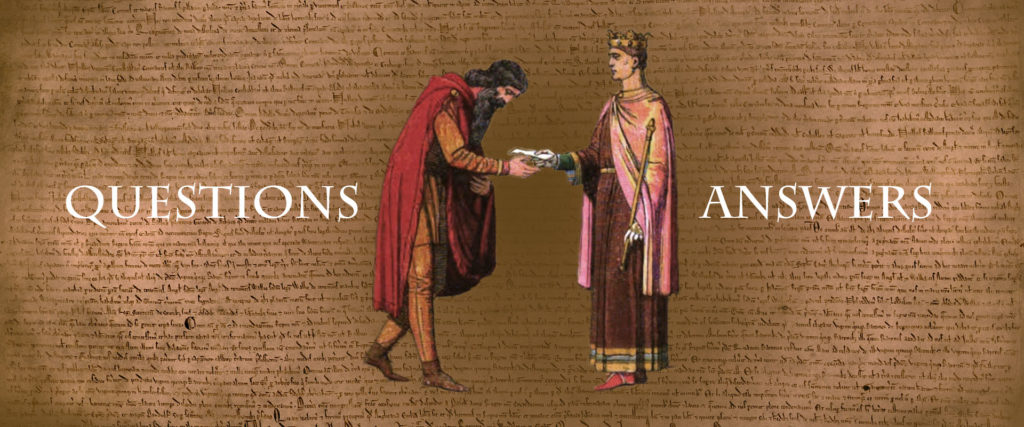
The Robin Hood Trilogy will include the following titles:
- Robin Hood's Dawn
- Robin Hood's Widow
- Robin Hood's Return
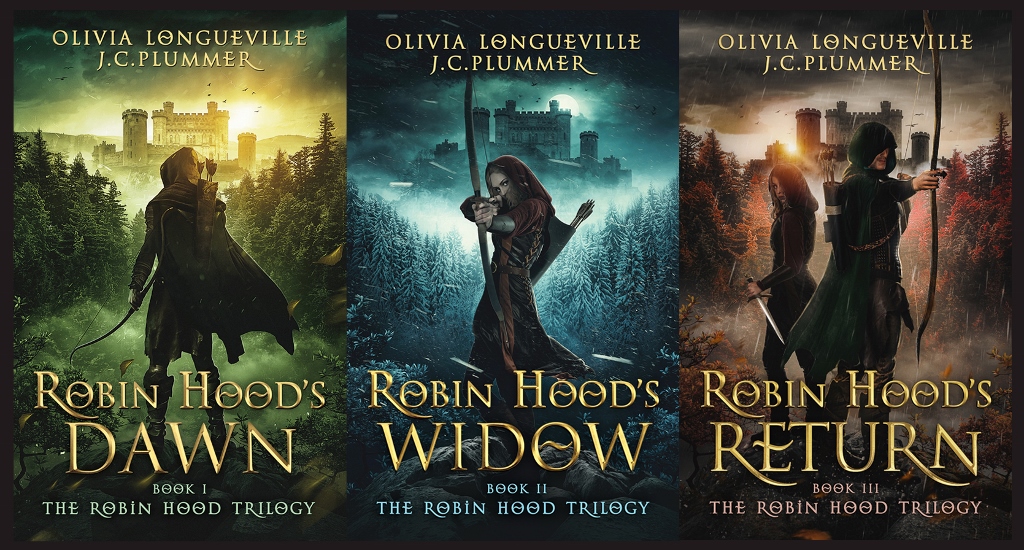
Although the final mysteries and conflicts will not be resolved until book 3, we have structured the trilogy so that books 1 and 2 do not end in cliffhangers.
The readers will not be left wondering whether the main characters will live or die, and we have endeavored to create a sense of completion in each of the first two books. Some story threads will be resolved, and some of the mysteries surrounding the main characters will be revealed in each of the first two books.
We think readers will be excited and eager for the next installment without suffering undue frustration at the endings of books 1 and 2.
There are many wonderfully imaginative interpretations of the Robin Hood legend. The legends and ballads about Robin Hood evolved over centuries, and the truth is lost to the mists of time. Some legends put him in Sherwood Forest during the time of King Richard or King John. Other traditions place Robin Hood in Barnsdale Forest in the 1300s. Sometimes he is described as a noble; other times he is a yeoman.
The only truth is that there is no right or wrong Robin Hood story. As long as Robin's fans enjoy the tale, then the story is worthy of this legendary hero!
Although our story is unique and original, we have incorporated many elements of the familiar legends of Robin Hood. The Robin Hood Trilogy will feature a noble Robin who is battling a corrupt Sheriff of Nottingham. In our Trilogy, readers will meet many familiar characters from the Robin Hood legends and ballads: Maid Marian, Little John, Allan-a-dale, Much the Miller's son, Will Scarlet, Guy of Gisborne, and of course, the Sheriff of Nottingham! Readers will also meet real historical figures: King Stephen, Eleanor of Aquitaine, Richard the Lionheart, King Philippe II of France, and Prince John "the Lackland."
The Robin Hood Trilogy closely adheres to the timeline of real history (1154-1194). Our extensive research into the events of this time period will form an intricate framework for this unforgettable tale of adventure, mystery, and suspense!
No; these books are intended for an older audience: late teens and up.
Although the books are not sexually explicit, there are references to adult relationships between characters. There are also descriptions of violence, battles, and war-time atrocities. During intense scenes of heightened emotion, characters will sometimes use strong language.
In the first book, Robin Hood's Dawn, Marian faces the threat of sexual assault, but she escapes.
In the second installment, Robin Hood's Widow, a secondary character is sexually assaulted. This event is not described, and only the aftermath is included in the narrative. This is a secondary character, NOT Marian.
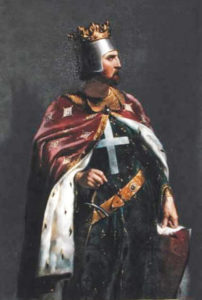
In recent years, it has become fashionable to speculate about this, but it is impossible to know the answer with any certainty after so many centuries and without any definitive evidence. Both sides of this debate feel strongly about their theories, but there is no conclusive proof for either side. You can read more about the controversy here.
King Richard was married. He reportedly had at least one illegitimate child. He certainly hoped to sire a son to inherit his crown.
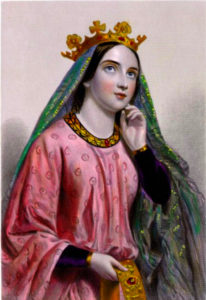
We have not addressed this controversy in the Robin Hood Trilogy. We mention Richard’s marriage to Berengaria of Navarre and his hope that his marriage would produce a son. Beyond that, we are allowing the readers to decide for themselves; they are free to imagine Richard according to their own beliefs.
In the trilogy, we have emphasized that the relationship between Richard and Robin is brotherly. Richard is nine years older than Robin, and he became Robin’s mentor when Robin’s father sent him to the court in Poitou at the age thirteen to further his studies and train for knighthood. Richard refers to Robin as “the brother of my heart,” a reference to both their close friendship and the estrangement between Richard and Prince John.
In the first book of the trilogy, Robin Hood's Dawn, we identify the date of Richard's coronation as September 3, 1189.
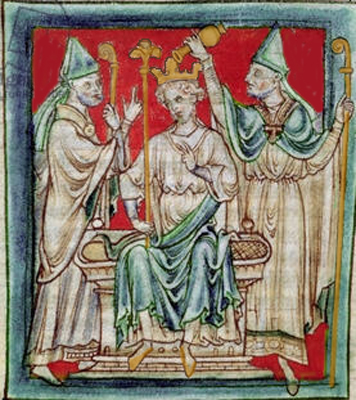
Historical accuracy is important to us, but we faced a conundrum here. About 60% of our sources said the coronation was September 13. The rest claimed it was September 3.
This coronation was the first in history to be described by an eyewitness in an account that survives to this day. The chronicler, Roger de Hoveden, wrote the following about the coronation of Richard I:
"[Richard] was consecrated and crowned king of England, at Westminster, in London, on the third day before the nones of September, being the Lord’s Day ..."
The "nones" is the fifth day of the month. Therefore, the third day before nones is the third of the month. The Lord's Day is Sunday, of course. During this time, the Julian calendar was in use. Using a calendar calculator for the Julian calendar date of September 3, 1189, we find that this day was a Sunday. September 13, 1189, was a Wednesday.
For these reasons, we selected September 3rd as the date of Richard's coronation. However, there are many historians whom we respect and admire who list the date as September 13th, and we humbly acknowledge that we don't know everything.
In the end, we had to choose a date, so we chose September 3rd.
Author Q&A
In our first book, Robin Hood’s Dawn, we re-imagined the origins of the Robin Hood legend, which included exploring his family dynamics: an aloof, selfish father and a kind-hearted mother devoted to ministering to the poor. One theme is how the consequences of immoral actions and secret sins can reverberate across generations. This is part of Robin’s legacy from his father.
We cast Robin as a hero fighting against the tyranny of a lawless government official. When Robin is falsely accused of a shocking crime by the new Sheriff of Nottingham, he could have retreated to a safe place beyond the reach of the sheriff. However, he feels a responsibility to the people because he believes in the intrinsic value of every human being. Instead of running away, he stays to protect the people from the sheriff. And this points to another theme: one person can make a difference by taking a stand for what is right.
The second book, Robin Hood’s Widow, picks up where the first book ends. Robin is alive and still with King Richard in the Holy Land, but Marian, the sheriff, and Guy of Gisborne have returned to England thinking that Robin Hood is dead.
Robin Hood’s Widow explores themes of grief and redemption, while featuring Marian’s adventures as leader of the outlaws. Her story is interwoven with Robin’s quest to return home while fulfilling his obligations to King Richard.
In this book, we wanted to explore both the stages of grief and their non-linear nature. Experiencing loss and grief is not like climbing stairs; you don’t complete one stage, progress to the next, and eventually arrive at acceptance. The emotional turmoil of an earlier stage can reappear and reassert itself during the process.
That being said, this story is not sad or depressing; Robin Hood’s Widow is an optimistic tale of triumphing over adversity.
The conclusion of the trilogy, Robin Hood’s Return, reunites Robin and Marian. Unfortunately, their joy is overshadowed by the prospect of a vengeful Prince John taking the throne. While Robin labors tirelessly to support King Richard and raise his ransom, the sheriff orchestrates a diabolical plot that causes Robin to be outlawed again. With Marian at his side, he must defeat the sheriff while ensuring the return of the king.
The sheriff’s secrets and the full extent of the conspiracy to end the Plantagenet dynasty are revealed in Robin Hood’s Return. Robin and Marian must prove their innocence while saving both King Richard and Prince John. In addition to the recurring theme of the sins of the father, the story explores themes of trust and forgiveness as Robin and Marian rebuild their relationship after several years apart.
There is a lot of variety in the many books and screen adaptations of the Robin Hood legend. We wanted to create a story that was respectful towards fans of the original ballads and legends without adhering to the same story lines that have been previously written. We hope that all Robin Hood fans will enjoy this fresh retelling of the story.
However, we felt that Marian is a character who deserves more attention. All too often she is a background character with little to do. With this in mind, we have focused on creating a Lady Marian who will figure more prominently in the story, especially in Robin Hood’s Widow, where she takes center stage as the leader of the outlaws. She must learn how to lead while finding clever ways to thwart the sheriff and rob those supporters of Prince John who dare enter Sherwood Forest. We also wanted Marian to be feminine and believable as a woman of the 12th century.
Robin Hood’s Dawn introduced many familiar characters from the Robin Hood legends: Maid Marian, Little John, Allan-a-dale, Will Scarlet, Much the Miller’s son, Guy of Gisborne, and the Sheriff of Nottingham. In Robin Hood’s Widow, Brother Tuck, a Knight Templar, will join the outlaws.
Readers will also meet real historical figures such as Richard the Lionheart, King Philippe II of France, Prince John "the Lackland," Eleanor of Aquitaine, and many others, including Ranulphus Besace. Who was he? Well, he was a real person who was King Richard’s personal physician!
We have structured the trilogy so that the books do not end in cliff-hangers, and we have endeavored to create a sense of completion in each of the books.
Although we want readers to start with Robin Hood’s Dawn, we know that some might be more interested in Robin Hood’s Widow. Therefore, we have endeavored to provide enough information in the second book so that a new reader will not be lost.
Both Robin and Marian are guarding secrets that will be revealed in Robin Hood’s Widow!
Olivia:
The story of Robin Hood’s Widow is very special to me, and I wrote the original version after I experienced a devastating personal loss. Readers might be surprised to learn that Robin Hood’s Widow was written before Robin Hood’s Dawn!
I love to tell stories with multi-dimensional characters. I am multi-lingual, and I enjoy writing stories in different languages. My first novel is an English-language alternate history featuring Anne Boleyn.
I met Coleen (J.C.) on the Internet, and we decided to co-author a Robin Hood Trilogy with Robin Hood’s Widow as its centerpiece.
Coleen (J.C.)
I’ve worked as a freelance editor for several authors, including Olivia. We connected over our love of history and Robin Hood. I was editing the original version of Robin Hood’s Widow when we were inspired to write a full trilogy with Robin Hood’s Widow as the centerpiece.
Robin Hood’s Dawn became the origin story, and now Robin Hood’s Return brings the story to completion with a fast-paced, thrilling finale.
Coleen:
Fortunately, Olivia is fluent in English, because that’s the only language I know!
Olivia:
We have found that we have a lot in common—especially our love of writing and of history. We have to work hard to merge our writing styles, but we have successfully done this.
Coleen:
That’s true. Olivia and I have very different “voices” and writing styles. You might even say they are nearly opposite styles.
I write in a straightforward, expository style, with a minimum of descriptive elements and metaphorical flourishes. I am good at explaining things, organizing ideas, and creating natural sounding dialogue.
Olivia:
My writing is characterized by lush romanticism and passionate lyricism. I love to create metaphors and descriptions which excite the imagination of the reader in a vivid and dramatic way.
Coleen:
In some respects, Olivia’s words are the emotional heart of the story, and my words represent the rational intellect. Of course, it’s not quite that cut-and-dried, but it is one way to describe how two people with such different styles have come together to create Robin Hood’s Dawn, Robin Hood’s Widow, and Robin Hood's Return.
